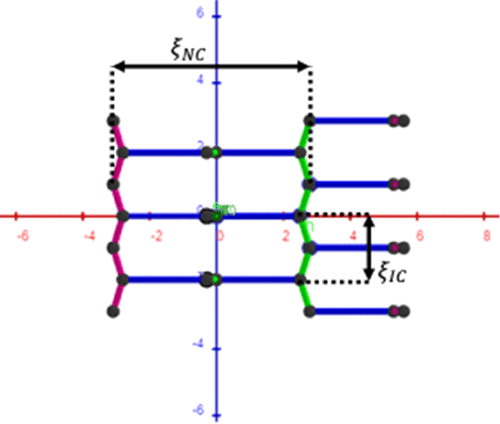当前位置:
X-MOL 学术
›
Biomacromolecules
›
论文详情
Our official English website, www.x-mol.net, welcomes your
feedback! (Note: you will need to create a separate account there.)
Characterizing the Molecular Architecture of Hydrogels and Crosslinked Polymer Networks beyond Flory–Rehner—I. Theory
Biomacromolecules ( IF 5.5 ) Pub Date : 2020-11-30 , DOI: 10.1021/acs.biomac.0c01256 Fernando T P Borges 1 , Georgia Papavasiliou 2 , Fouad Teymour 1
Biomacromolecules ( IF 5.5 ) Pub Date : 2020-11-30 , DOI: 10.1021/acs.biomac.0c01256 Fernando T P Borges 1 , Georgia Papavasiliou 2 , Fouad Teymour 1
Affiliation

|
In the early 1940s, Paul Flory and John Rehner published a series of papers on the properties of swellable polymeric networks. Originally intended for vulcanized rubber, their development has since been extensively used and extended to much more complex systems, such as hydrogels, and used to estimate the mesh size of such networks. In this article, we take a look at the development of the Flory–Rehner equation and highlight several issues that arise when using such a theory for the described hydrogel networks. We then propose a new approach and equations to accurately calculate the backbone molecular weight in-between crosslinks while explicitly accounting for the molecular mass of the crosslinker and branch segments. The approach also provides more applicable mesh dimensions, for complex networks with macromeric crosslinkers and/or a high degree of branching, as is the case of biocompatible hydrogels. The approach is finally illustrated by a case study comparing the values obtained with our proposed approach to those using the state-of-the-art approach.
中文翻译:

表征弗洛里-雷纳之外的水凝胶和交联聚合物网络的分子结构 - I。理论
20 世纪 40 年代初,Paul Flory 和 John Rehner 发表了一系列关于可膨胀聚合物网络特性的论文。它们最初用于硫化橡胶,后来被广泛使用并扩展到更复杂的系统,例如水凝胶,并用于估计此类网络的网格尺寸。在本文中,我们回顾了 Flory-Rehner 方程的发展,并强调了将这种理论用于所描述的水凝胶网络时出现的几个问题。然后,我们提出了一种新的方法和方程来准确计算交联之间的主链分子量,同时明确考虑交联剂和支链段的分子量。该方法还为具有大分子交联剂和/或高度支化的复杂网络提供了更适用的网格尺寸,就像生物相容性水凝胶的情况一样。最后通过案例研究来说明该方法,将我们提出的方法与使用最先进方法获得的值进行比较。
更新日期:2020-12-14
中文翻译:

表征弗洛里-雷纳之外的水凝胶和交联聚合物网络的分子结构 - I。理论
20 世纪 40 年代初,Paul Flory 和 John Rehner 发表了一系列关于可膨胀聚合物网络特性的论文。它们最初用于硫化橡胶,后来被广泛使用并扩展到更复杂的系统,例如水凝胶,并用于估计此类网络的网格尺寸。在本文中,我们回顾了 Flory-Rehner 方程的发展,并强调了将这种理论用于所描述的水凝胶网络时出现的几个问题。然后,我们提出了一种新的方法和方程来准确计算交联之间的主链分子量,同时明确考虑交联剂和支链段的分子量。该方法还为具有大分子交联剂和/或高度支化的复杂网络提供了更适用的网格尺寸,就像生物相容性水凝胶的情况一样。最后通过案例研究来说明该方法,将我们提出的方法与使用最先进方法获得的值进行比较。











































 京公网安备 11010802027423号
京公网安备 11010802027423号